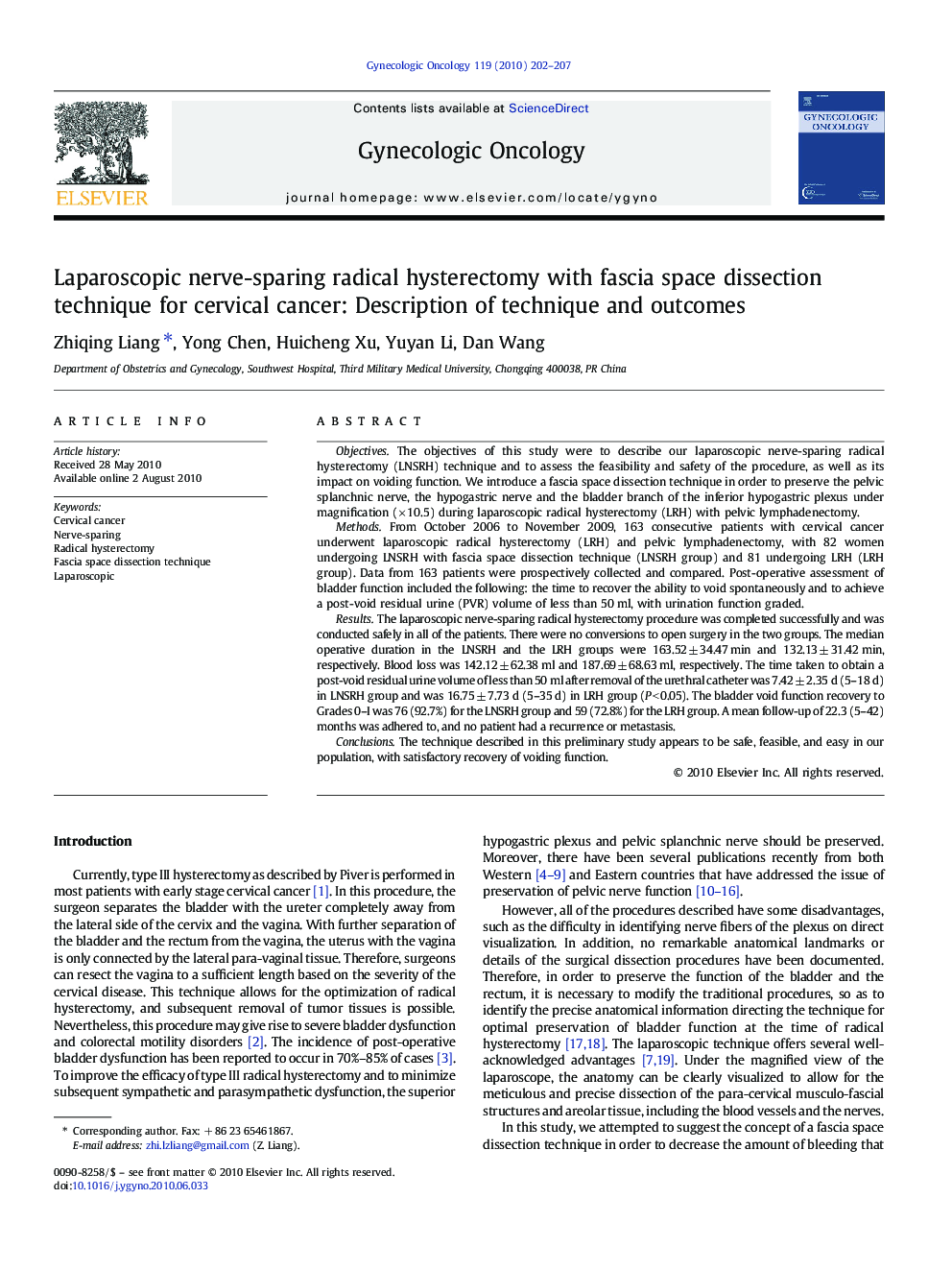| کد مقاله | کد نشریه | سال انتشار | مقاله انگلیسی | نسخه تمام متن |
|---|---|---|---|---|
| 3947316 | 1254426 | 2010 | 6 صفحه PDF | دانلود رایگان |

ObjectivesThe objectives of this study were to describe our laparoscopic nerve-sparing radical hysterectomy (LNSRH) technique and to assess the feasibility and safety of the procedure, as well as its impact on voiding function. We introduce a fascia space dissection technique in order to preserve the pelvic splanchnic nerve, the hypogastric nerve and the bladder branch of the inferior hypogastric plexus under magnification (× 10.5) during laparoscopic radical hysterectomy (LRH) with pelvic lymphadenectomy.MethodsFrom October 2006 to November 2009, 163 consecutive patients with cervical cancer underwent laparoscopic radical hysterectomy (LRH) and pelvic lymphadenectomy, with 82 women undergoing LNSRH with fascia space dissection technique (LNSRH group) and 81 undergoing LRH (LRH group). Data from 163 patients were prospectively collected and compared. Post-operative assessment of bladder function included the following: the time to recover the ability to void spontaneously and to achieve a post-void residual urine (PVR) volume of less than 50 ml, with urination function graded.ResultsThe laparoscopic nerve-sparing radical hysterectomy procedure was completed successfully and was conducted safely in all of the patients. There were no conversions to open surgery in the two groups. The median operative duration in the LNSRH and the LRH groups were 163.52 ± 34.47 min and 132.13 ± 31.42 min, respectively. Blood loss was 142.12 ± 62.38 ml and 187.69 ± 68.63 ml, respectively. The time taken to obtain a post-void residual urine volume of less than 50 ml after removal of the urethral catheter was 7.42 ± 2.35 d (5–18 d) in LNSRH group and was 16.75 ± 7.73 d (5–35 d) in LRH group (P < 0.05). The bladder void function recovery to Grades 0–I was 76 (92.7%) for the LNSRH group and 59 (72.8%) for the LRH group. A mean follow-up of 22.3 (5–42) months was adhered to, and no patient had a recurrence or metastasis.ConclusionsThe technique described in this preliminary study appears to be safe, feasible, and easy in our population, with satisfactory recovery of voiding function.
Journal: Gynecologic Oncology - Volume 119, Issue 2, November 2010, Pages 202–207